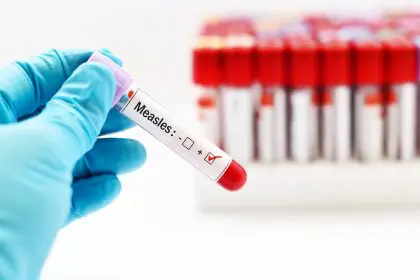The global health challenges of COVID-19 and monkeypox have exposed critical vulnerabilities in healthcare systems worldwide. Yet these outbreaks may represent just the beginning of a troubling trend, as mounting evidence links climate change to the rising prevalence of infectious diseases around the world.
How climate hazards create disease pathways
A groundbreaking study published in Nature Climate Change reveals climate change as more than an environmental concern—it represents a direct threat to human health. The research identified that 58% of infectious diseases have been aggravated by climate-related hazards such as heat waves, droughts, and wildfires.
Most alarmingly, researchers discovered over 1,000 unique pathways through which climate events contribute to pathogenic disease spread. The analysis of medical literature examined connections between various climate hazards and specific illnesses, finding that 218 out of 375 known human infectious diseases worsen due to extreme weather events.
4 ways climate change drives disease transmission
The relationship between our changing climate and human disease follows four primary mechanisms:
- Extreme weather pushes disease-carrying animals and insects into new territories and closer to human populations
- Climate disasters force human migration into areas with greater exposure to disease vectors
- Certain pathogens thrive and strengthen in climate-altered environments
- Extreme weather events weaken human immune systems, increasing vulnerability to infections
The research extended beyond infectious diseases to include non-infectious conditions like asthma and allergies, which also worsen with climate shifts. Excluding these would overlook serious health problems aggravated by environmental changes.
Rising temperatures expand disease territories
Temperature increases allow disease-carrying insects to survive in regions previously too cold for them. Mosquitoes now thrive at higher altitudes, bringing malaria to populations with no prior exposure or immunity. Similarly, ticks carrying Lyme disease have expanded beyond the northeastern United States as warming creates favorable conditions in new areas.
These geographic shifts place naive populations at risk—communities with no historical exposure to these diseases and limited medical infrastructure to address them. Health systems already strained by existing challenges now face emerging threats in unexpected locations.
The imperative for immediate action
The findings highlight the necessity for rapid reduction in greenhouse gas emissions alongside preparation for increasing disease threats. Humanity must adapt to a changing climate that brings heightened risk of pathogenic diseases across geographic boundaries.
A report from the Proceedings of the National Academy of Sciences warns of potentially catastrophic scenarios including widespread infectious disease outbreaks, food shortages, extreme weather disasters, and resource conflicts. These scenarios demand serious consideration from world leaders and policy makers.
Personal and collective responsibility
While systemic change remains essential, individual actions collectively create meaningful impact. Personal choices like reducing carbon footprints, supporting sustainable practices, and advocating for climate-conscious policies contribute to broader solutions.
Meaningful progress requires both local action and global cooperation in monitoring disease emergence and addressing climate drivers. International collaboration on disease surveillance, early warning systems, and coordinated response mechanisms becomes increasingly critical as pathogens cross borders more readily.
Building resilient health systems
The intersection of climate change and infectious disease demands robust, adaptable health systems capable of responding to emerging threats. This includes: Enhanced disease surveillance in vulnerable regions, Increased capacity for rapid diagnostic testing, Climate-informed public health planning, Strengthened international cooperation on outbreak response and Research on climate-sensitive interventions
Health professionals need training to recognize and treat diseases previously uncommon in their regions. Public education must include awareness of changing disease risks and appropriate preventive measures.
The path forward
Understanding the complex relationships between our environment and health provides the foundation for effective action. By acknowledging climate change as a health emergency—not just an environmental issue—we can mobilize the necessary resources and political will to address both causes and consequences.
The evidence clearly demonstrates that climate action represents health action. Each step toward mitigating climate change simultaneously reduces disease burden, particularly among vulnerable populations least responsible for carbon emissions yet most affected by their consequences.
As we navigate these intersecting crises, the choices made today will determine the health landscape for generations to come. The science points unmistakably toward urgent action as our best hope for a healthier future.













